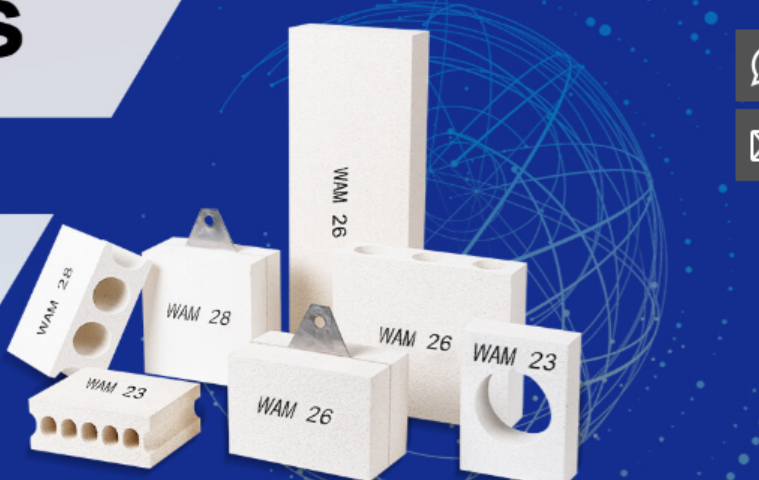The Best Solution For Energy Saving And Reducing CO2 Emission
The Best Solution For Energy Saving And Reducing CO2 Emission
 Tel: +86-532-85717690/85717352/85832089
Tel: +86-532-85717690/85717352/85832089 E-mail: wam@wamcn.net
E-mail: wam@wamcn.net
The performance of refractories has an impact on the cost and quality of glass production.
The operating environment for refractories in different regions of a glass furnace varies.
As a result, various types of industrial bricks are utilized in various regions of the glass furnaces.
Refractory insulating bricks, in general, have a lot of advantages. Choosing the best refractory fire brick, on the other hand, can be challenging.
Quickly, let's look at different phases of Insulating Bricks in a glass furnace and the role they play

Due to alkali vapor, the crown of glass furnaces is vulnerable to long-term thermal and chemical damage. To prevent energy loss, it must also be well-insulated.
Therefore, refractories in this area must have volumetric stability, low porosity, low conductivity, and high refractoriness.
Because of its cost, low stoning tendency, insulating capability, creep resistance, high thermal stability after 600°C, and compatibility with batch material, silica insulation materials are the ideal material for crown building.
For almost a century, they've been used in the construction of glass melting furnaces.
Although silica bricks are now only used in the crown and superstructure, continuous improvements in production have resulted in improved chemical purity and tighter process parameters over a wide variety of shapes and sizes.
Due to its exceptional resistance to acid slag, chemical corrosion, and alkali vapor, fused cast alumina block is utilized to meet the stringent requirements of oxygen-fuel furnaces.
Do you need a stiff, long-lasting, and cost-effective insulating brick for glass industry or glass furnace? Try to get from a reputable manufacturer.
The furnace's superstructure will be subjected to high temperatures and chemical attacks from volatile chemicals and dust that accumulate on the walls.
They readily attack insulating products, resulting in progressive refractory wear in contact with the glass.
This item necessitates refractories with strong thermal shock resistance, as well as enhanced corrosion resistance.
In this area, high-density AZS blocks, Zirconia-Mullite bricks, and Mullite bricks with low permeability, good hot strength, and excellent sag resistance are employed.
Refractories in those regions that come into touch with melt glass suffer from high temperatures and glass corrosion.
Insulating Bricks and molten glass, fluxing agents, and volatile compounds all undergo chemical reactions.
After the original link has dissolved, erosion can occur, sweeping away refractory grains.
Zirconia-Mullite bricks are utilized on the bottom or in direct contact with the sidewalls because of its high refractoriness, thermal resistance, low melt glass reaction, and good glass corrosion and vapor resistance.
Because of reactions that occur between refractory material and hot gas, these sections of the furnaces are subjected to particularly severe aggression throughout their use.
In these instances, more refractory and insulating material performance is necessary to achieve better heat efficiency.
A regenerator is made up of a regenerator chamber and a checker work (or simply checkers) of insulating bricks.
Magnesia bricks are commonly employed in the regenerator, including the region atop checker work and crown, due to their high stable, high thermal stress resilience, heat resistance, high refractoriness, and strong resistance to basic slags.
Fireclay bricks are ideal for the bottom areas of the regenerator because of their excellent alkali and creep resistance.
So, if you're looking for high-performance refractory insulating bricks for glass industry, we have a team of refractory professionals who can help you locate the right refractory solution for your needs. Do not hesitate to contact us for your premium insulating bricks.